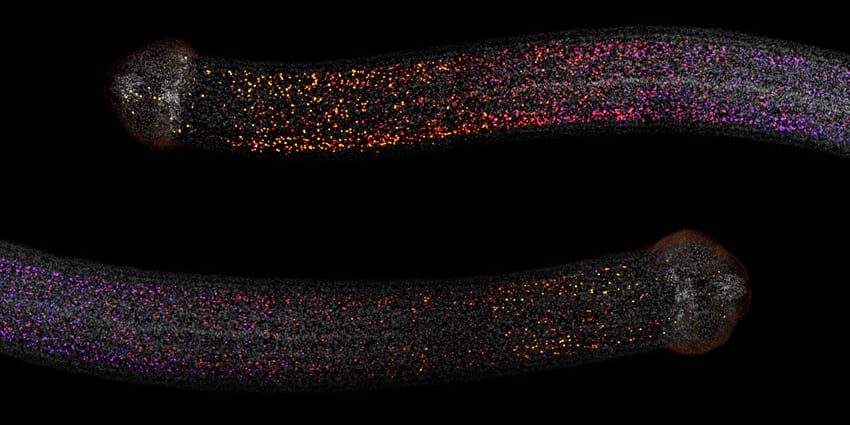Scientists have identified the stem cells that allow tapeworms to regenerate and found that their location in proximity to the head is essential, according to a new study in eLife.
These novel insights can help explain how tapeworms grow in their human and animal hosts and could be helpful in finding new ways to target these parasites.
Tapeworms are famous for the enormous lengths they reach and their ability to grow thousands of segments, called proglottids. During their normal life cycle they shed large parts of their body and then regenerate to maintain a certain length. However, it has never been fully understood how they achieve this.
“We know that tapeworm regeneration is likely to involve stem cells, but up until now their potential to regenerate has never been comprehensively studied,” explains lead author Tania Rozario of the Morgridge Institute for Research. “In this study, we explored which parts of the tapeworm are able to regenerate and how regeneration is driven by stem cells.”

The team used a toolbox of molecular techniques to answer these questions. First, they removed certain fragments of the worms and then grew them in the lab to determine which regions of the body can regenerate. This showed that neither the head nor posterior body alone can regenerate and that the neck portion is needed. Surprisingly, severing the head from the neck did not stop the tapeworm from continuing to grow, but the regeneration of new segments was inhibited. Only when the tapeworm head and neck were left intact could the tapeworm continuously regenerate segments.
Next, they tested whether the neck contains special stem cells that allow tapeworms to regenerate. They labelled rapidly multiplying cells in the worms and then studied their location in the body. They found that these cells exist throughout the whole body and not just in the neck. Further studies also revealed no evidence for stem cells that are unique to the neck.
This led the team to speculate that stem cells are found throughout the tapeworm but that signals only operating in the neck are necessary to activate them. To test this, they administered irradiated tapeworms (that would be destined to die) with donor cells from different parts of a healthy worm. These donor cells rescued the worms and allowed them to regenerate.
When stem cells were removed from the donor cells, this rescue could not occur. This proves that the rapidly growing cells identified in this study are bona fide stem cells that can establish and regenerate within another host worm. Moreover, stem cells from any part of the body could rescue the injured worms, which suggests that external factors, rather than features of stem cells in the neck, allow regeneration to occur.
“It appears that in tapeworms, location matters enormously,” concludes senior author Phil Newmark, Howard Hughes Medical Institute Investigator at the Morgridge Institute. “The head and neck environments provide cues that control the ability of stem cells to regenerate segments, even though the stem cells involved in this process are not confined to either one of these areas of the body.”
